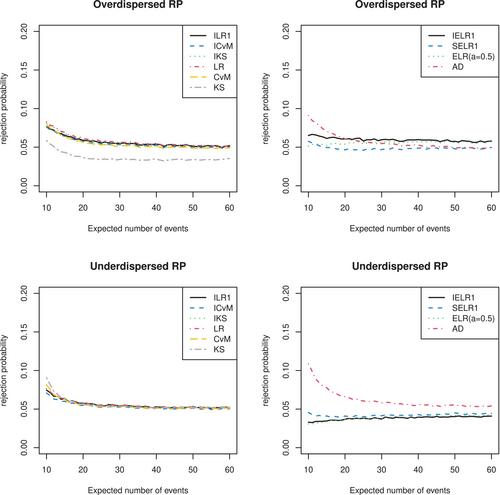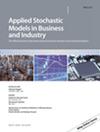对时间删减重复事件数据趋势的新测试
IF 1.3
4区 数学
Q3 MATHEMATICS, INTERDISCIPLINARY APPLICATIONS
引用次数: 0
摘要
我们考虑对经常性事件数据进行趋势检验。更确切地说,对于此类数据,我们考虑的是对来自更新过程的数据进行零假设检验。新的检验基本上是通过考虑经典趋势检验的适当整合版本而获得的。此外,我们还提出了早先考虑过的检验与非单调替代方案(如浴缸趋势)的自适应版本。模拟研究表明,新测试具有良好的特性,有时甚至优于经典测试。还考虑了真实数据的例子。本文章由计算机程序翻译,如有差异,请以英文原文为准。

New tests for trend in time censored recurrent event data
We consider testing for trend in recurrent event data. More precisely, for such data we consider testing of the null hypothesis of data coming from a renewal process. The new tests are essentially obtained by considering appropriate integrated versions of classical trend tests. Moreover, adaptive versions of earlier considered tests versus non-monotonic alternatives, like bathtub trend, are suggested. A simulation study shows that the new tests have favorable properties and sometimes outperform classical tests. Examples with real data are also considered.
求助全文
通过发布文献求助,成功后即可免费获取论文全文。
去求助
来源期刊
CiteScore
2.70
自引率
0.00%
发文量
67
审稿时长
>12 weeks
期刊介绍:
ASMBI - Applied Stochastic Models in Business and Industry (formerly Applied Stochastic Models and Data Analysis) was first published in 1985, publishing contributions in the interface between stochastic modelling, data analysis and their applications in business, finance, insurance, management and production. In 2007 ASMBI became the official journal of the International Society for Business and Industrial Statistics (www.isbis.org). The main objective is to publish papers, both technical and practical, presenting new results which solve real-life problems or have great potential in doing so. Mathematical rigour, innovative stochastic modelling and sound applications are the key ingredients of papers to be published, after a very selective review process.
The journal is very open to new ideas, like Data Science and Big Data stemming from problems in business and industry or uncertainty quantification in engineering, as well as more traditional ones, like reliability, quality control, design of experiments, managerial processes, supply chains and inventories, insurance, econometrics, financial modelling (provided the papers are related to real problems). The journal is interested also in papers addressing the effects of business and industrial decisions on the environment, healthcare, social life. State-of-the art computational methods are very welcome as well, when combined with sound applications and innovative models.

 求助内容:
求助内容: 应助结果提醒方式:
应助结果提醒方式:


